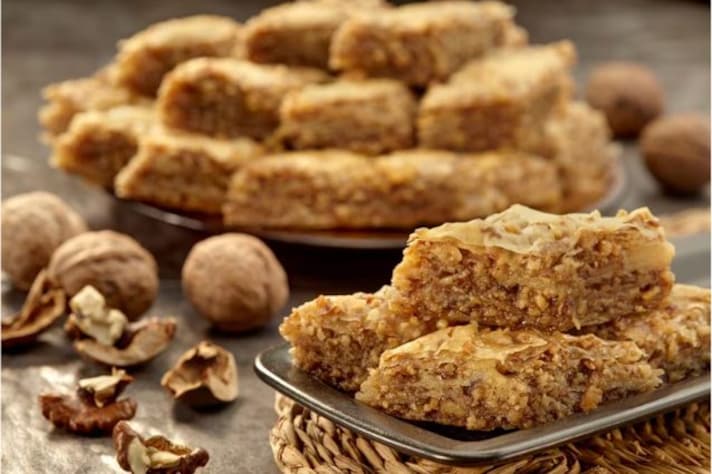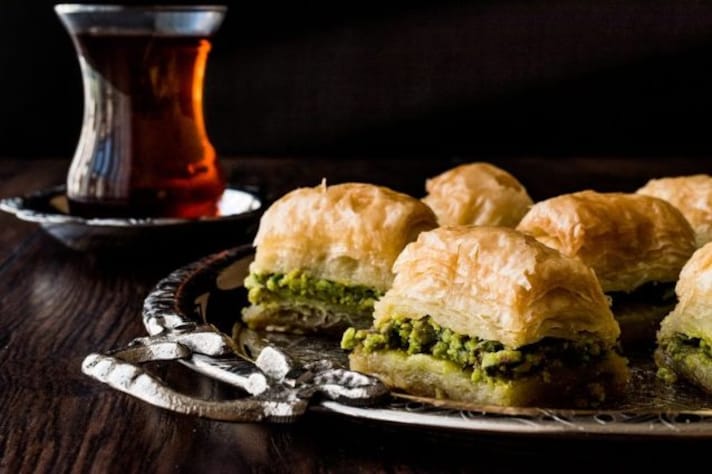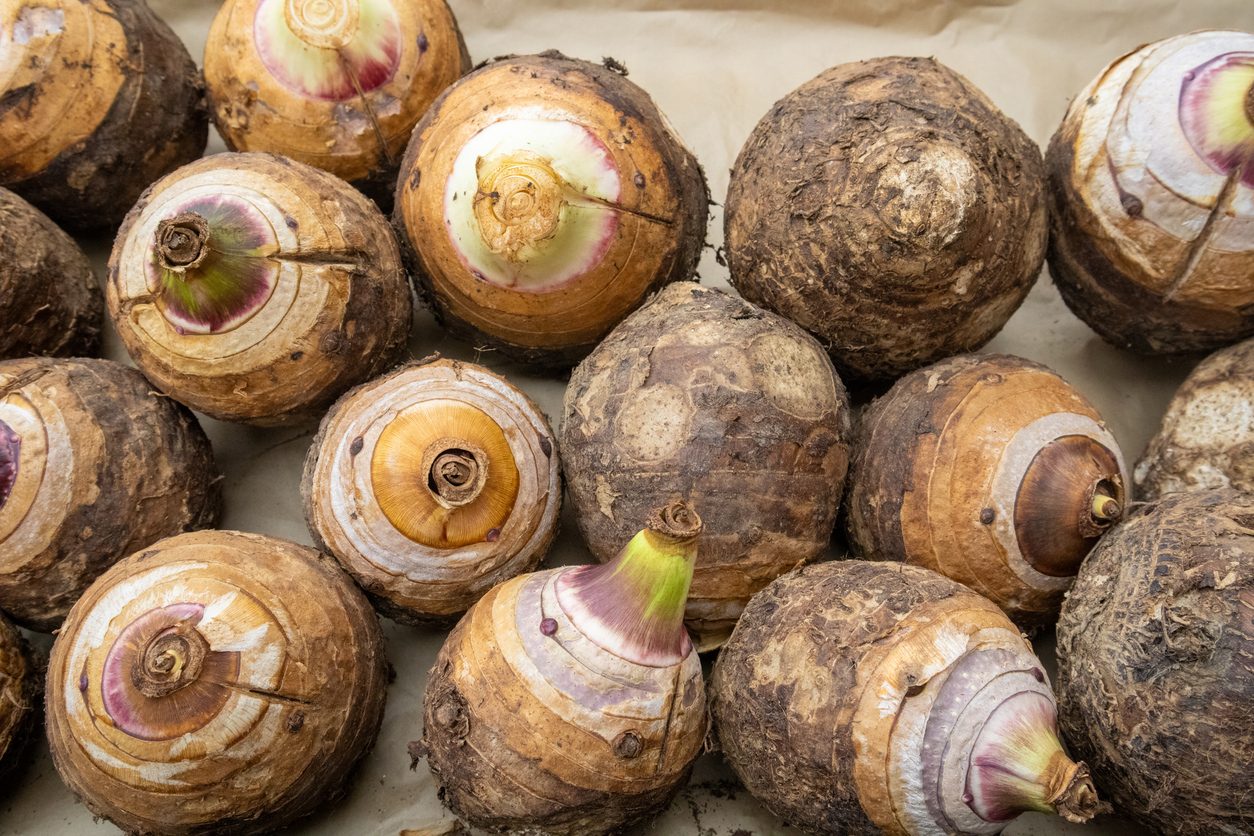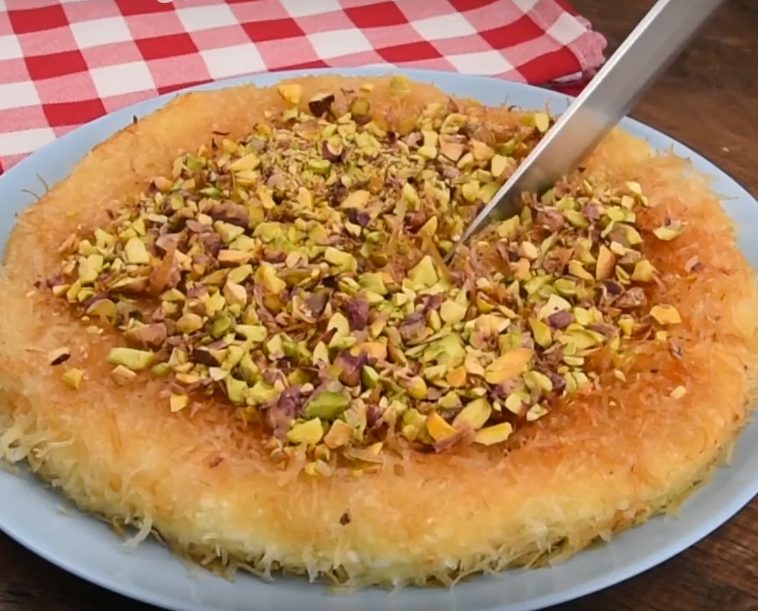Everything You Need to Know About Baklava, the Most Contended Dessert in Middle East
Baklava represents one of the most famous gastronomic specialties of Middle Eastern countries and the Balkan area. Its paternity is bitterly disputed between Turkey and Greece, where there are differences in shape, filling and number of layers. Once reserved only for rich families, it was made exclusively on holidays, due to its long preparation: today, however, it is possible to enjoy it anywhere and at all hours. This sweet combination of phyllo dough, dried fruit and honey is also considered the forerunner of the strudel. Let's discover its history together, on a short gastronomic journey through the centuries.
;Resize,width=742;)
Imagine biting into crunchy layers of a thin golden pastry, which contains a filling of chopped walnuts, almonds and pistachios, sprinkled with a sweet honey syrup: this is Baklava, a Middle Eastern pastry specialty, among the most appreciated in the world. The history of Baklava is lost in the mists of time and boasts unexpected curiosities, such as the one about its origin. Even today its paternity is the subject of dispute between Turkey and Greece, although in 2013 the European Union recognized the PGI to that of Turkey. But let's go in order.
From Mesopotamia to the Ottoman Empire
The origin of this delicious dessert is rather controversial and without certain sources. What is certain is that it was the fruit of a meeting between the millenary cultures and traditions of Middle Eastern peoples. Each of these peoples, from Greeks to Turks, from Arabs to Armenians, claims to have been the first to make Baklava.
One version of the story, however, attributes the origin of Baklava to the Assyrians, an ancient civilization of Mesopotamia. It seems that in this area, starting from the 8th century BC, the Assyrian population stratified unleavened bread, stuffing it with chopped walnuts, soaking it in honey and then cooking it in primitive wood-fired ovens.

The Greek sailors and merchants, who regularly passed through Mesopotamia, were won over by the sweet flavor of this exquisite dessert, which they imported together with its recipe.
From the 3rd century BC onwards, Baklava was also produced and served in Greece. The Greeks are credited with having made a notable improvement on the original recipe, with the creation of an innovative dough technique, which allowed the dough to be made considerably thinner, compared to the more double Assyrian dough. This is phyllo dough, which means leaf in Greek, in reference to how incredibly thin it was.
As the Ottoman Empire, in the 15th century AD, began to consolidate its hegemony in the Middle East, it came to include many regions and many peoples, such as Turks, Arabs, Jews, Greeks and Armenians. It is in this phase that the history of Baklava is enriched: each people probably influenced or modified the recipe during the Ottoman domination. Along the spice and silk routes, new ingredients began to circulate to add to the dessert. The Arabs preferred to enrich it with rose water and cardamom, while the Armenians with cloves and cinnamon. Serbian pastry chefs, however, became famous for creating a Baklava made up of over 100 layers of pastry.
Topkapi Palace and the Baklava Alayı
The Baklava that we know and appreciate today is therefore the one that spread during the Ottoman Empire, starting from the 15th century AD. The recipe was perfected in the kitchens of the Topkapi Palace, in Instabul, and quickly became one of the sultan's favorite delicacies, consumed inside of their harems, as pistachios and honey were considered aphrodisiac ingredients. According to an ancient belief, the sultan used to offer some pieces to his soldiers, on the fifteenth day of Ramadan, during a ceremony called Baklava Alayı, as a sign of appreciation.

Greece and Turkey, the Rivalry Also Runs at The Table
Relations between the Greeks and Turks have never been idyllic, but a rarely mentioned rivalry revolves around the history of Baklava. In fact, during a demonstration, Greek Cypriots dared to publicly present the specialty as a national dessert: this immediately sparked the ire of the Turks, who claimed the paternity of Baklava, reaching as far as Brussels. In 2013 the EU recognized the PGI for Turkish Baklava from Gaziantep, temporarily putting an end to this diatribe.
Gaziantep Baklavası was the first Turkish gastronomic product to obtain the coveted recognition, and is described as a phyllo pastry dessert, in which the main ingredient is Antep pistachio, produced, in fact, in the province of Gaziantep. American journalist Charles Perry, a famous food historian and world-famous food critic, also supports the Turkish thesis. But this was certainly not enough to calm the Hellenic claims and the ancient rivalry between the two peoples, who continue to detest each other, not even very cordially.

From Baklava to Strudel
Starting from 1526, with Sultan Suleiman the Magnificent, the Baklava recipe was spread throughout all the territories of the Ottoman Empire, up to Hungary. Here, with the advent of the Austrian domination and the birth of the Austro-Hungarian empire, it reached Vienna and Alto Adige. In these territories its recipe has been revisited, adapting it to traditional local products, until it transformed, with the introduction of apples, into that of the strudel.
Baklava Today: Taste and Properties
Having finished our journey through the centuries, we can finally set off to discover the flavor of Baklava. This sweet combination of phyllo dough, dried fruit and honey is enjoyed and served differently in various Middle Eastern countries.
In Greece it is cut and served in triangles, squares or rectangles, in Lebanon the favorite shape is that of a diamond, while in Turkey it is rolled up and cut into circular slices. According to the Orthodox, Baklava must be composed of 33 layers of pastry, in reference to the years of Christ's life.
In addition to being incredibly good, Baklava also boasts many beneficial properties. Walnuts, pistachios and almonds are rich in good fats, which help control cholesterol levels, as well as being an excellent source of vitamin E, folic acid, and mineral salts, such as copper and magnesium. Phyllo dough, on the other hand, contains few calories and is free of saturated fats, while honey is an antioxidant and helps control blood sugar levels.
;Resize,width=767;)
;Resize,width=712;)
;Resize,width=712;)
;Resize,width=712;)
